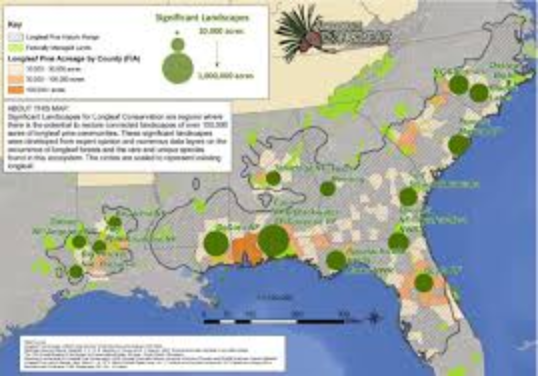
How Much of the Longleaf Pine Ecosystem Remains?
The longleaf pine (Pinus palustris) is an iconic species of the southeastern United States, once dominating the coastal plain from eastern Texas to southeastern Virginia. Its vast, park-like forests, characterized by open canopies and diverse understories, played a crucial role in the region's ecology, economy, and cultural heritage.
Historical Range of Longleaf Pine
Before European colonization, longleaf pine forests blanketed an estimated 90 million acres across the southeastern coastal plain. This vast ecosystem provided habitat for a wide array of plants and animals, many of which are now considered rare or endangered. The open canopy structure, maintained by frequent low-intensity fires, created a mosaic of sunlight and shade, fostering a diverse herbaceous layer.
| Period | Area (Million Acres) |
|---|---|
| Pre-European Settlement | 90+ |
| 1990s (Low Point) | 3.2 |
| Present Day | 5.2 |
Decline of the Longleaf Pine
The arrival of European settlers marked a turning point for the longleaf pine ecosystem. The forests were rapidly cleared for timber, agriculture, and development. Longleaf pine lumber was highly prized for its strength and durability, used extensively in shipbuilding, construction, and the naval stores industry.
Factors contributing to the decline:
- Uncontrolled Logging: Large-scale logging operations, often employing clear-cutting methods, decimated vast tracts of longleaf pine forests.
- Agricultural Conversion: Land was cleared for agriculture, particularly for cotton plantations, further reducing the longleaf pine's range.
- Fire Suppression: The natural fire regime, essential for maintaining the open canopy and promoting longleaf pine regeneration, was disrupted by human activities. Fire suppression allowed other tree species to outcompete longleaf pine seedlings.
Conservation Efforts and Recovery
Recognizing the ecological and economic importance of the longleaf pine ecosystem, concerted conservation efforts have been underway for several decades. These efforts focus on:
- Restoration: Initiatives involve planting longleaf pine seedlings, using prescribed burns to mimic natural fire regimes, and controlling competing vegetation.
- Land Protection: Public and private organizations are acquiring and protecting remaining tracts of longleaf pine forest.
- Sustainable Forestry Practices: Promoting sustainable timber harvesting methods that encourage longleaf pine regeneration.
Current Status and Future Outlook
Thanks to these conservation efforts, the acreage of longleaf pine forest has increased to approximately 5.2 million acres today. While this represents a significant increase from the historical low, it is still a small fraction of the original range.
Continued conservation efforts are crucial for ensuring the longleaf pine ecosystem's long-term survival. Public awareness, landowner education, and sustainable management practices are essential for preserving this iconic American landscape for future generations.
Q&A
1. What is the main reason for the decline of the longleaf pine ecosystem?
While multiple factors contributed, uncontrolled logging for timber, followed by agricultural conversion, played the most significant role in the decline of the longleaf pine.
2. Why is fire important for the longleaf pine ecosystem?
Fire is a natural and essential part of the longleaf pine ecosystem. It helps control competing vegetation, prepares the seedbed for germination, and maintains the open canopy structure crucial for the ecosystem's biodiversity.
3. What can individuals do to support longleaf pine conservation?
Individuals can support longleaf pine conservation by learning more about the ecosystem, supporting organizations involved in restoration efforts, advocating for sustainable forestry practices, and considering planting longleaf pine trees on their property if they live within its native range.